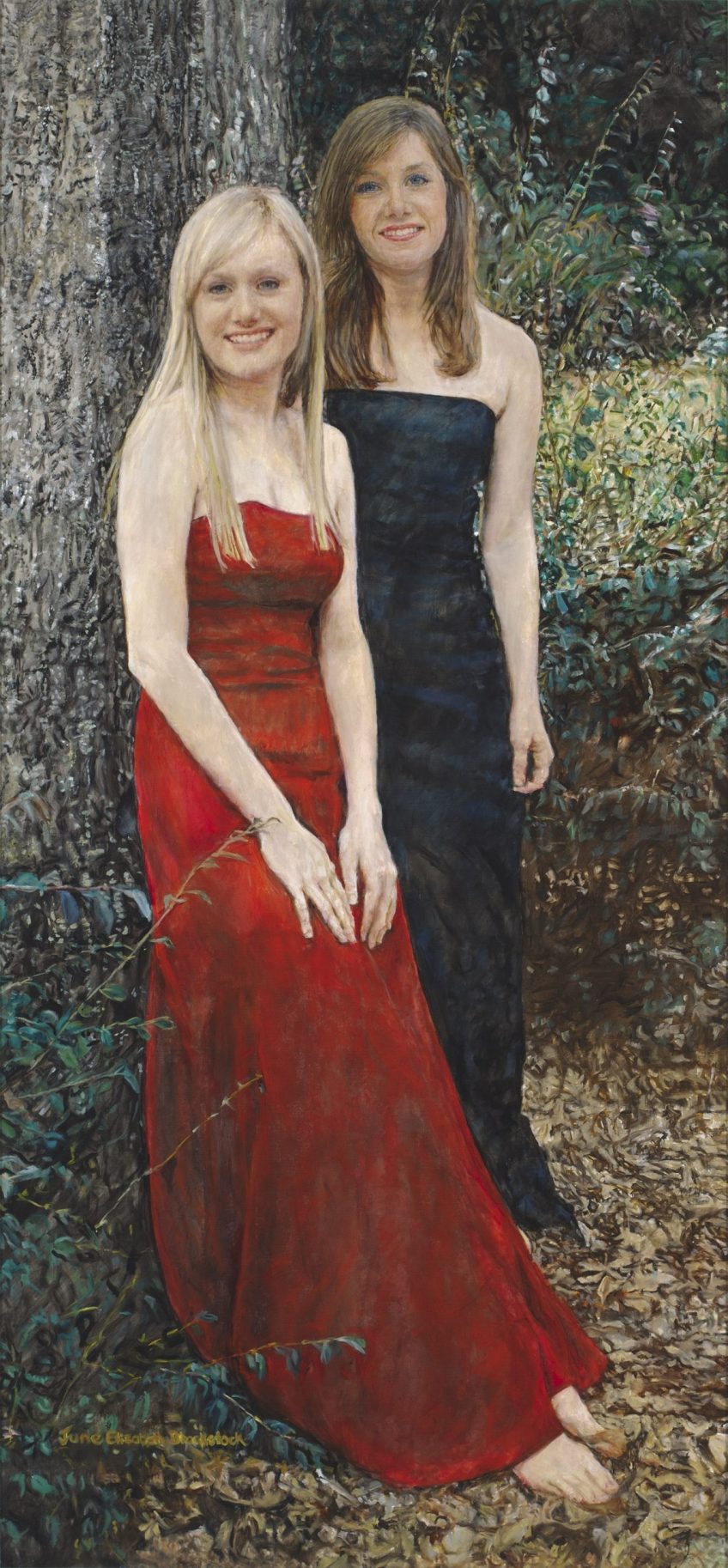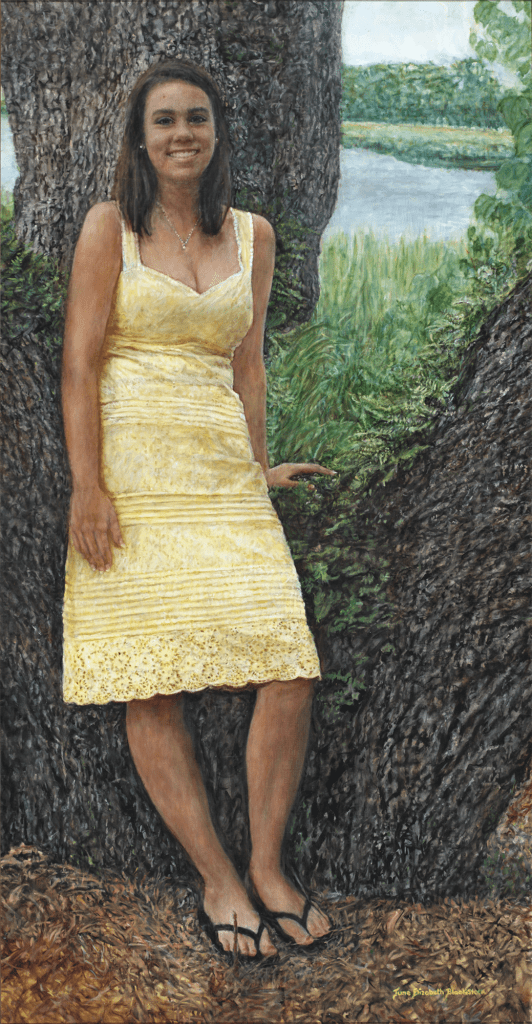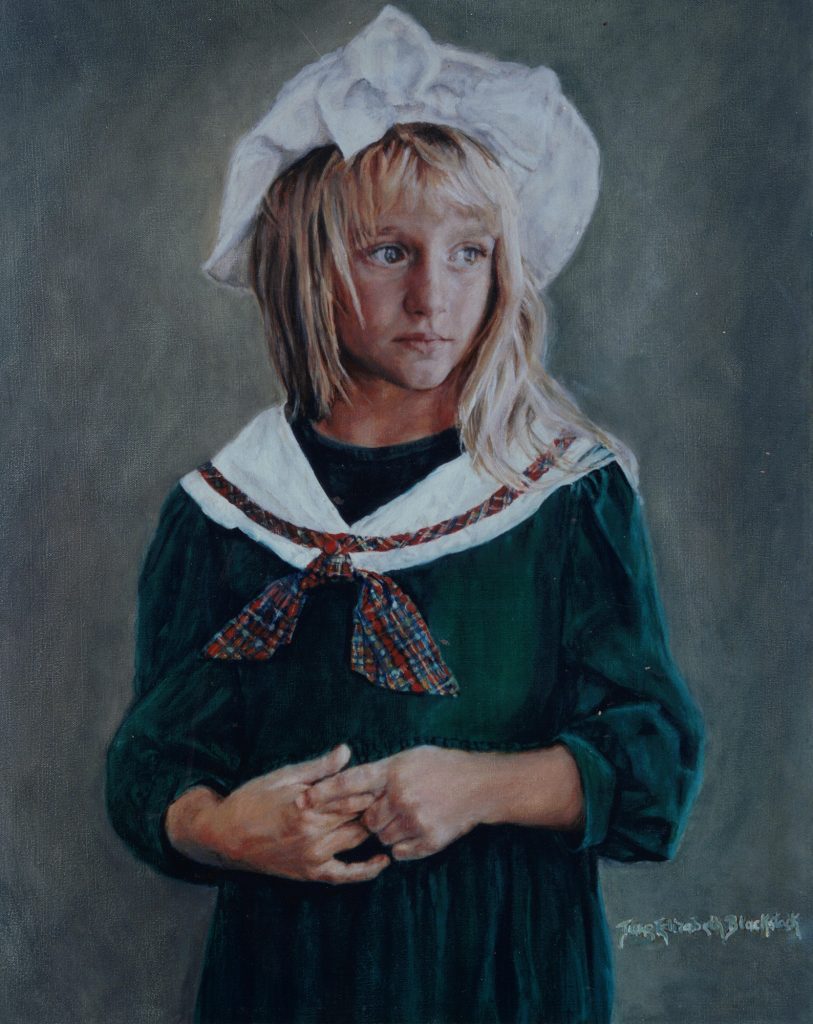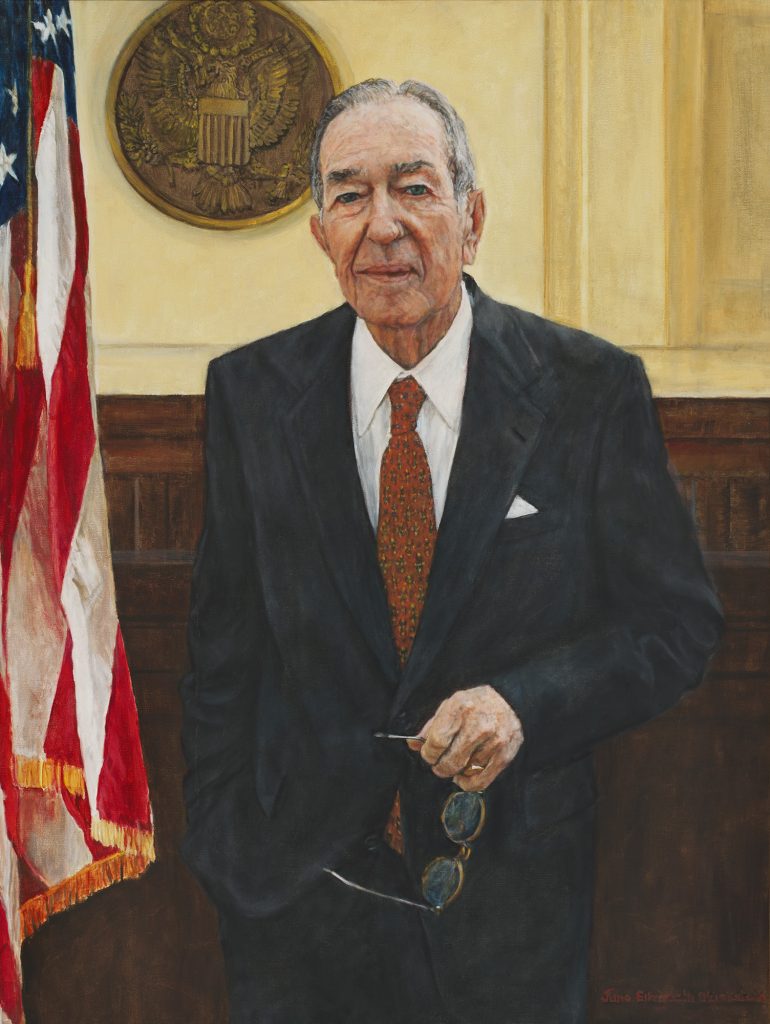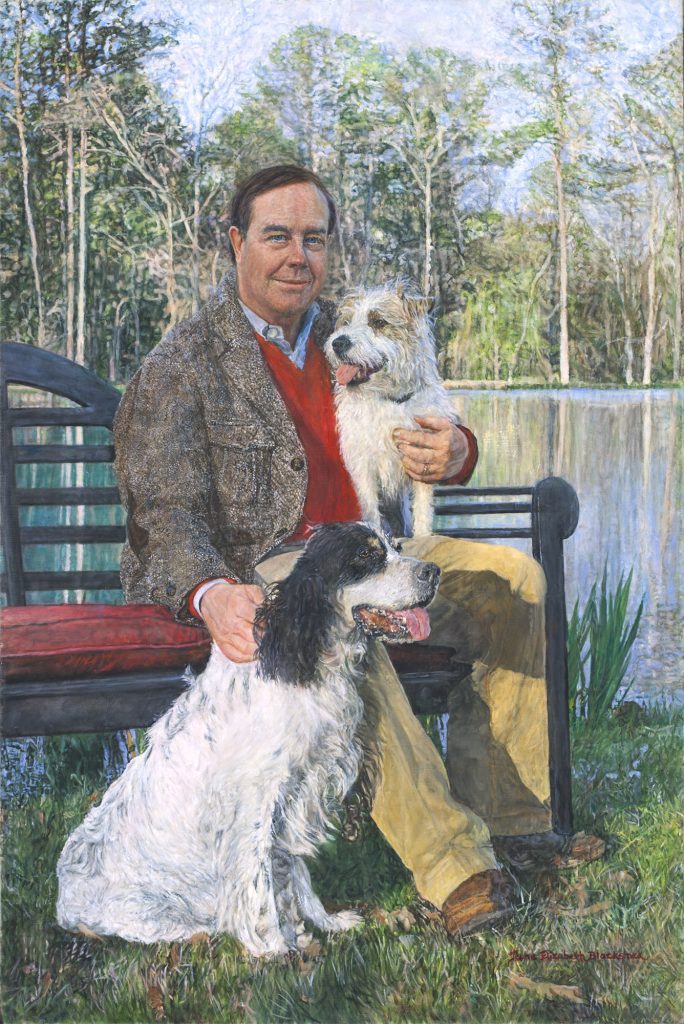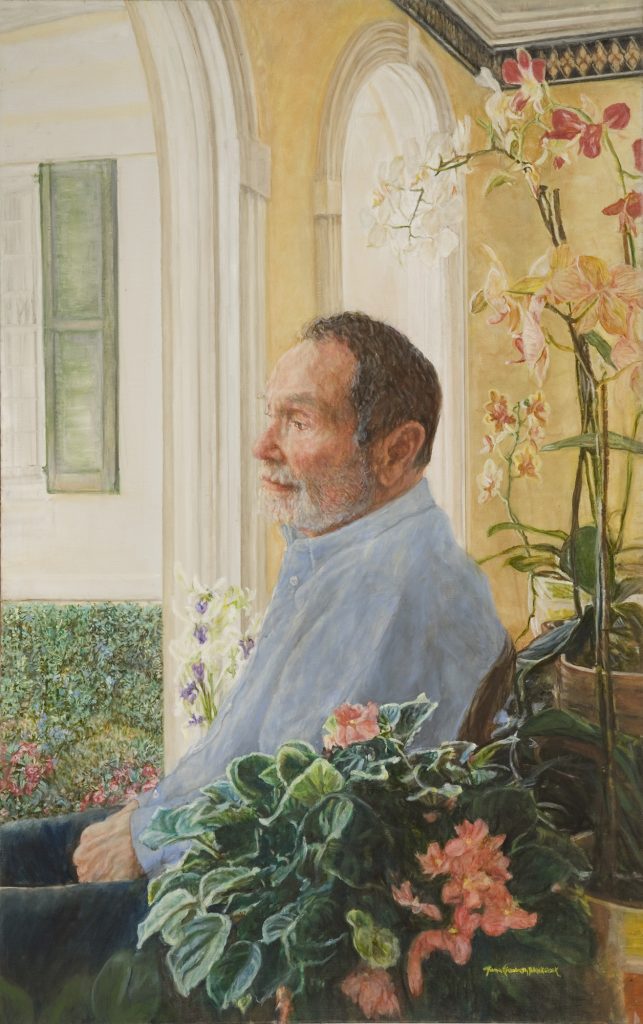Interview by Luana Luconi Winner for FOLIO Magazine of the Portrait Society of Atlanta
“Even with posthumous portraits I seek out people who knew them and can give me insights into the person they were. Desiring to be a true friend to my clients and exercising my God-given blessing to know people at a soul level, I try to paint a portrait that has life.”
Always a painter of people, Member of Excellence June Blackstock, was found, even as a child, painting faces on every single page of stationery in her mother’s home. She had an early start in the arts at eight years old. June had only one focus – art, specifically painting.
Fortuitously, well known artist, Frank Crittenden, who went to pre-depression Art Students League and studied with the eight ash can painters, as well as Robert Henri, lived only a street over from June’s home. As he had children of his own, when she would just show up he invited her in to watch him work. “He would put newsprint up on an easel and giving me charcoal, I would draw him while he painted me,” she explained. He encouraged her to go to museums and study by observation and to learn completely by observation.
By sixth grade she was studying with a Mrs. Cormack, and although she was a China painter by trade, her husband was an artist with Disney. They had a rich history and taught art well.
June was an art major at a community college and then at the university, however, the training was not in the classical manner. Instead she had to tolerate the psychedelic colors/ pottery/ sculpture in plaster route taught in that period.
She worked as a legal secretary while attending night school for a teaching degree that would permit her to teach art. She attained her BS degree in middle grade education from Georgia Southwestern State University and then worked for the school system.
Frank Crittenden was there all along. It was through Frank’s wife, that June met and later married France Pierce, Mrs. Crittenden’s cousin.
After her father’s passing, she created a portrait of him without hesitation or doubt that she could achieve a solid likeness. That convinced her to focus on portraiture. Her next portrait was of a small child. France’s support and encouragement were key, and after the painting was done, it was he who sent the image off to the Allied Artists of America competition in 1989. The child ballerina in practice clothes curled up in a ball on a brocade sofa had attitude, and it garnered a bronze medal in that first show. France continued to send slides to many shows and created a portfolio for June encouraging her all the time.
In the 1990’s, June went on to study with Richard Whitney, Daniel Greene, Gordon Wetmore, and Michael del Priore. Later she worked with Peggy Baumgartner on color theory, and eventually developed a palette of her own. About this time Roselyn Lipscomb, an important Portrait Society of Atlanta member, introduced her to the PSA. The Society opened a family of artists to June – Tom Nash, Nancy Honea, Suzanne Smith, Lora Hill, CT Biggers, Ernest Varner and so many others. With a strong feeling of the soul of her subject, not just the outward appearance, her commissions began to build. June started attending the portrait conventions, placing thumbnail ads in magazines, and receiving free publicity in local papers and television. The portraits continue to flow.
Here are four described in June’s own words.
“She was reluctant to pose so we went to her room to choose the clothes and hats, we were going to play dress-up. We had loads of fun but I still felt I wasn’t getting the real Traci. I was talking with her mother and turned to see her looking out the window. With no one watching she became this serious, pensive child who observed and gave deep thought to the world around her. That was how I wanted to paint her. In order to focus on her character I didn’t paint the room but put her before a simple background. She was mature beyond her years.”
“Everyone knew him as a statesman but I wanted to paint him as the true Southern Gentleman of the old school, as at home in a poor man’s shack as at the White House. As others were vying for his attention, he focused on me and my process. Soft-spoken but with the ability to make people stop and listen to him, he demonstrated common sense and innate brilliance. I tried to make all this apparent through his eyes.”
“Judge Peagler wanted his portrait to include his favorite hunting dog. As we tried different locations his house dog, a little Jack Russell terrier walked with us. Deciding on a spot, we began to do the reference work. The Jack Russell realized what was going on and decided he wanted to be in the painting too. After being rebuffed a few times he went off a way and started to play with a rock. At some point Judge Peagler looked over and saw the terrier pointing to the rock as if he were a world champion bird dog. After that the Judge couldn’t bear to keep him out, so he picked him up and posed him for the portrait. His love and caring for his dogs showed a kindness not seen in many people in these “me, me, me” days.”
“Mr. Raines was Mayor of Dawson and a family friend. He had not been well for several months so I was surprised when he called me to paint him. When I arrived at his home I was told he had just had a minor stroke but he insisted I start my work anyway. He wasn’t able to sit long so we took as many reference photos as we could. I spent some time working on his beloved orchids and the background in general, hoping to work with him in person again soon. The reference photos revealed his condition. I sat behind him at church, so I began to paint from memory. Not my usual practice, but prompted by God’s leading, I decided to show him my unfinished work. He was happy and complimented me on capturing his likeness. I thought I would be returning soon but he died the next morning.”
Luana Luconi Winner is a member of The Portrait Society of Atlanta
To learn more about June Blackstock, visit her website at www.juneblackstock


